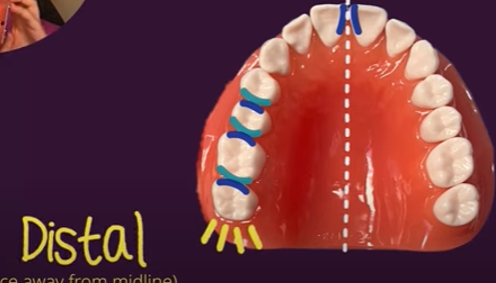What is Distal in Dental?
The word “distal” is used in dentistry to refer to the surface of a tooth that is farthest from the midline of the mouth. The midline is an imaginary line that divides the mouth into two equal halves. The surface of a tooth that is closest to the midline is called the mesial aspect, while the surface that is farthest from the midline is called the distal aspect.
The concept of distal is important in dentistry for a number of reasons. First, it is used to describe the alignment and positioning of teeth. For example, if a dentist or orthodontist notes that a tooth is “distally tipped,” it means that the tooth is tilted or leaning towards the distal aspect, away from its normal position. This can occur due to a number of factors, such as genetics, improper growth, or external forces acting on the tooth.
Second, the term distal is often used when referring to the relative positions between adjacent teeth. Teeth in the mouth have four main surfaces: mesial, distal, buccal/labial (towards the lips or cheeks), and lingual/palatal (towards the tongue or palate). By assessing the relationship between adjacent teeth, dental professionals can diagnose and classify various dental conditions such as malocclusions (misalignment of teeth), crowding, spacing, or abnormalities in the eruption pattern.
Third, distal surfaces of teeth are also closely associated with dental hygiene practices. Dental professionals emphasize the proper cleaning of these surfaces as they tend to be more challenging to access and clean thoroughly compared to other areas. Since adjacent teeth influence the visibility and access to the distal surfaces, flossing, interdental brushes, or other specialized tools are often recommended to maintain optimal oral hygiene.
Finally, the concept of distal is imperative in dental procedures such as extractions, dental implants, or the placement of orthodontic anchors. During tooth extractions, dental professionals often refer to the distal root or aspect of the tooth to indicate the direction of extraction force or the presence of any anomalies. Similarly, when discussing dental implants, the distal bone structures play a significant role in evaluating the feasibility and long-term success of the implant placement.
In summary, the term “distal” is an important directional term in dentistry that is used to describe the surface of a tooth that is farthest from the midline of the mouth. This concept is important in a number of areas, including the alignment and positioning of teeth, dental hygiene, and dental procedures.
I hope this blog post has helped you to understand what is distal in dental. If you have any further questions, please do not hesitate to ask.

